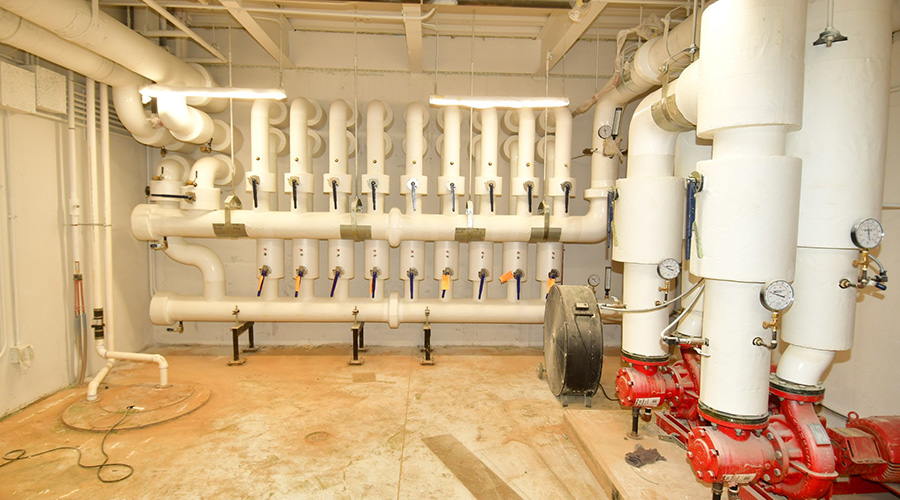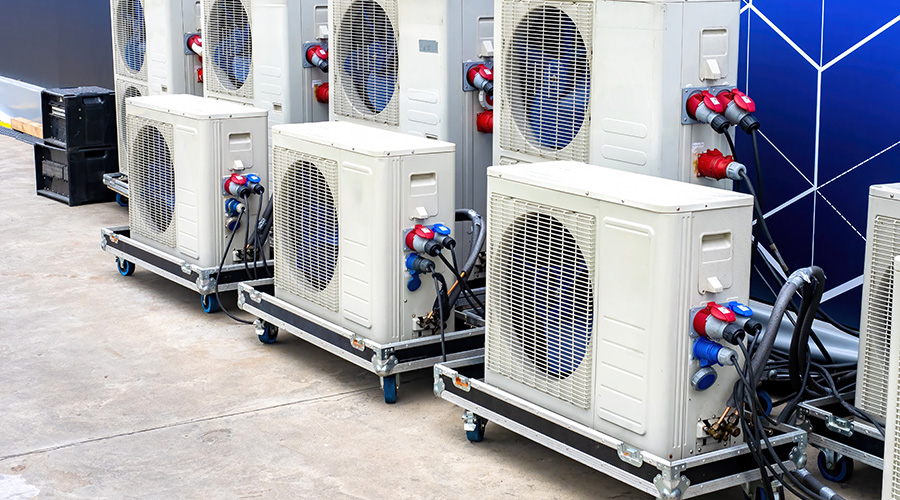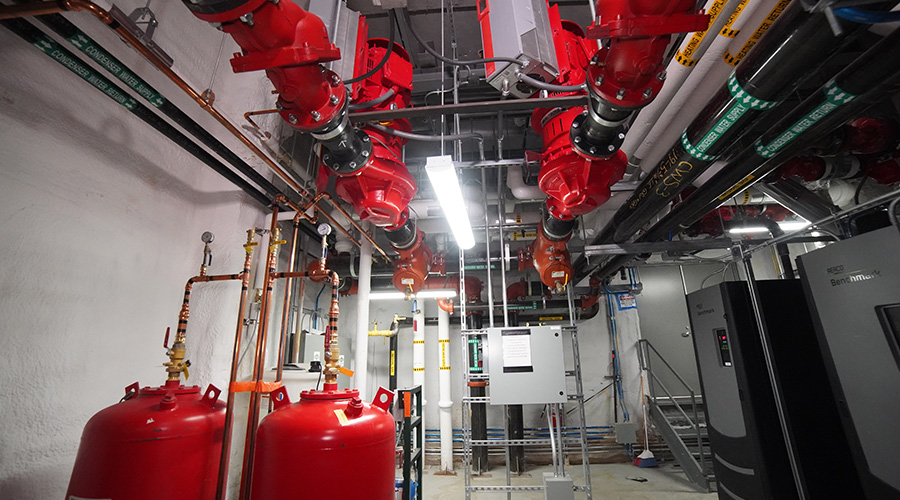For HVAC Efficiency, Optimize Source Equipment For Hot Water And Chilled Water
A third area of HVAC efficiency is to optimize heating and cooling source equipment for hot water and chilled water. There is a basic conflict between optimizing efficiency of distribution systems and optimizing efficiency of source equipment. For distribution, hotter hot water and colder chilled water can bring greater temperature differential across the system, reducing required flow and transport energy use. For sources of heating and cooling, however, it is more efficient to produce cooler hot water and warmer chilled water. Optimizing these conflicts will result in the most energy-efficient systems.
For both boilers and heat pump cycle heat sources, lower hot water temperature results in greater efficiency. Lower hot water temperature allows use of condensing boilers and even lower hot water temperature increases condensing boiler efficiency. Maximizing efficiency of the entire system relies on maximizing thermal coupling between the distribution medium, air or water, and the conditioned space. The key is close approach heating coils, or extended surface area convectors or radiant panels. By reducing the temperature differential between space and distribution medium (air or water), temperature differential across the transport system can be maximized while maintaining a lower-temperature heating source.
The situation with cooling sources is analogous, although the frequent need for dehumidification adds complications. The usual temperature setpoints of a chilled water system are often set by the fact that the dew point temperature of the ideal comfort condition (75 degrees F temperature, 50 percent relative humidity) is 55 degrees F. Maintaining that dew point in the space would typically require a supply air dew point temperature of 53 degrees F. Producing that temperature at a cooling coil typically would require an entering chilled water temperature at the coil of 45 to 46 degrees F, and a supply-chilled water temperature from the chiller of 44 degrees F. For an optimized all-air HVAC system, reduction of air transport energy is usually more effective than reduction of chilled water production energy, so selection of a coil with a 6 degrees F approach temperature should be accompanied by 44 degrees F chilled water and 51 degrees F temperature off the coil, reducing the fan volume and energy by 10 percent.
Another way to minimize cooling energy is to reduce the temperature at which the refrigeration device rejects heat. Use of evaporative heat rejection with cooling coils or evaporative condensers is one option. Rejection of heat-to-surface water features such as ponds or rivers is another method. With either method, resetting the condenser water set point in response to non-design exterior conditions increases savings.
Another strategy is rejection of heat to the ground, although this usually requires heat extraction from the ground. Failure to balance heat rejected into the ground during the cooling cycle and heat extracted from the ground during the heating cycle can result in long-term temperature drift in the soil surrounding the ground heat exchanger. Many systems have failed or delivered poor energy performance, over the years, due to this imbalance. Well-designed, balanced systems can deliver significant energy savings compared to air source heat pumps or evaporative systems with heat rejection.
Daniel H. Nall, PE, FAIA, LEED Fellow, is corporate director of sustainable design, WSP Flack + Kurtz. He specializes in sustainable projects. He can be reached at daniel.nall@wspfk.com.
Related Topics:













